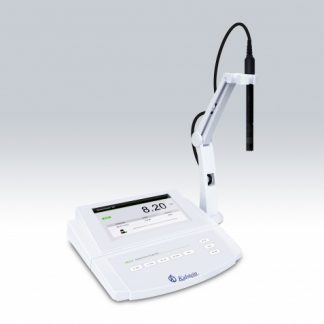Oxygen meters are laboratory equipment designed to measure the quality of water through sensors incorporated in the equipment that help optimize the organoleptic properties according to the concentration of the samples.
In this case, many mechanisms must be controlled to carry out the winemaking processes, because there are elements that influence the quality of the wine. However, there are properties that need to be handled during bottling and dissolved oxygen control.
On the other hand, the existence of oxygen can be advantageous when it provides polymerization reactions, in addition to providing proliferation of microorganisms that are indispensable to find the level in oxygen concentrations and that is beneficial.
Dissolved Oxygen Meters Performance
Thanks to the use of the dissolved oxygen meters, and especially those we have in Kalstein, it is possible to achieve the realization through electrochemical sensors, which include those of galvanic types such as polarographic. Basically, it’s about measuring the oxygen levels that go through the films, causing a current that is transformed by the meter for later calculation.
As for optical sensors, it is the most used because it is measured under the aperture of the fluorescence loss. It acts under a luminophore that is part of the film or membrane, which is stimulated with blue LED light, emitting a red light, and the oxygen dissolved in the presence of the sample decreases the stimulus. Thus, when there is no oxygen, the signals improve and as the oxygen acts with the luminophore, it minimizes the intensity and duration of the luminescence, measured with the photodetector where finally the meter is used to calculate the concentration of dissolved oxygen.
In other words, applying oxygen meters is the most recommended equipment for wine cellars, since their technical characteristics, luminescence and technology are adapted to the different needs during calculations or measurements from different points of view, such as: at rest, from different heights, from the bottle or in transfer methods.
Determination of Wine with the Use of Oxygen Meters
The determination of the quality of the wines is precisely influenced by the amount of oxygen it contains and depending on its concentration can have oxidation mechanisms that harm the wine, such as:
- Color Development
- Accumulation of microorganisms
- Loss of taste
- Expiration
In other words, wine requires a certain amount of oxygen during manufacture at maturation and development. When it has unpleasant odors and the characteristic is dry, it is at that time that oxygen should be added to the young wine. It usually happens after the fermentation and filling processes, however, whatever the situations, the idea is to measure the oxygen concentration is the most important step.
Advantages of Oxygen Meters for Wine Cellars
At Kalstein, it has oxygen meters that have advantageous features, such as:
- It has essential regulators to perform live practices, and are special to be used in wine cellars.
- It has waterproof probes, with extensions up to 30 m long.
- It has greater stability in white and rosé wines
- The fermentation mechanisms are satisfactory
- Provides balance in structure and color
- Controls the aroma of rosé and white wines
- It provides customer satisfaction, thanks to its high content of sensory properties.
Dissolved Oxygen Meters Brand Kalstein
We at Kalstein invite you to know our wide range of excellent quality equipment, fully trained for the entire industrial sector. And on this occasion, we offer you the Dissolved Oxygen Meters, belonging to the YR series, with important features, such as: Provides compensations of salinity and barometric pressure to eliminate any errors in the measurement processes. Ensures temperature compensation for accurate readings over the entire range. Detects and blocks the end of the measurement. Among many more specifications you can see in our catalog HERE


